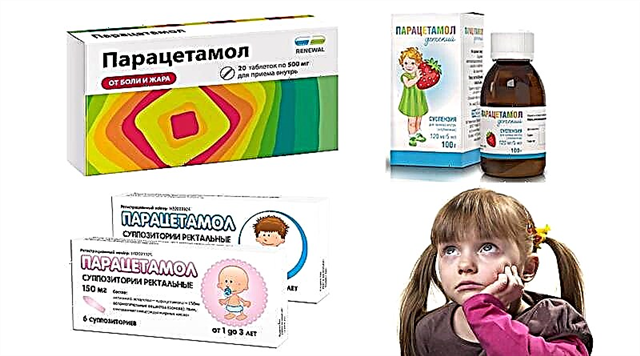
Drops "Sofradex" are used in practice not only for the treatment of infectious diseases of the eyes and ears, but also for sinusitis and adenoids in children. The action of this medication is based on a combination of antibiotics and a hormone. "Sofradex" avoids surgical removal of the adenoids.
Release form
"Sofradex" is available in the form of drops and ointment.
- Drops - a colorless, tasteless solution with the smell of alcohol. Sold in 5 ml vials. Each of them has a cork with a dropper.
- Ointment produced in tubes of 15 and 20 g.

Composition
Drops and ointment "Sofradex" have a similar composition. The medicine includes:
- framycetin sulfate;
- gramicidin;
- dexamethasone.
The composition of the preparations also includes auxiliary components - citric acid and water, and in drops - ethanol.
Operating principle
The mechanism of action of the drops is based on three main components that complement and enhance the action of each other. So, framycetin sulfate has a bactericidal effect, suppressing such common microorganisms as Staphylococcus aureus and Escherichia coli. Gramicidin also fights staphylococcus.
Dexamethasone acts as an anti-inflammatory and anti-allergic agent.

Indications
The instructions for use say that "Sofradex" - drops for eyes and ears. If they are instilled into the eyes, the medicine reduces pain, burning, and lacrimation. And when instilled into the ears, the remedy reduces the symptoms of otitis media, pain, burning, and a feeling of stuffiness in the ear.
However, "Sofradex" is prescribed by doctors for the treatment of nasal congestion, as well as adenoids.
- The use of this remedy for adenoids helps to stop the manifestations of rhinitis, relieve swelling of the nasal mucosa, and helps to restore nasal breathing.
- Helps "Sofradex" with allergic rhinitis, as well as sinusitis in schoolchildren.


At what age is it prescribed?
"Sofradex" is not prescribed for the treatment of infants. The only exceptions are individual readings.
Contraindications
"Sofradex" is not used to treat children with intolerance to one of the components of the drug. Also contraindications are the following diseases:
- tuberculosis;
- viral or fungal infections;
- corneal damage (including ulcers, glaucoma).
You can not bury "Sofradex" with perforation, that is, with a ruptured eardrum, which is often a consequence of advanced otitis media.

Side effects
During treatment with Sofrodex, two types of side effects can occur.
- The first caused by local exposure to the hormone. Symptoms include increased intraocular pressure, loss of visual acuity.
- Second group symptoms associated with allergic reactions to its components. This is burning, itching, pain at the injection sites. These signs may appear not in the first days of treatment, but later.
Since the instructions for use do not indicate the possibility of intranasal administration of the drug (through the nose), the symptoms associated with the treatment of nasal congestion and adenoids are not listed.
However, it can be assumed that children may experience side effects as with treatment with other antibiotics (regardless of the form of administration):
- nausea;
- vomiting;
- decreased appetite;
- diarrhea.


Instructions for use
With rhinitis in children, during the first five days of treatment, 4 drops are instilled into each nostril, and the next 5 days - 2 drops (if necessary).
The treatment regimen for adenoids is somewhat different. Adenoids are overgrown tissue in the nasal cavity. In fact, it protects the body from the penetration of infections, but if the child is often sick, it can grow, interfering with normal breathing. Adenoids are treated with medication or surgically removed. The first way is, of course, more preferable.
For the treatment of adenoids, during the first 10 days, 4 drops should be injected into each nasal passage 2 times a day. Then for another 5 days, instill 2 drops 2 times a day, and then 5 days, 2 drops (once a day). The practice of using the drug shows that after 5 days the size of the adenoids decreases, nasal breathing is restored (including numbers and during sleep).
The use of "Sofradex" in the form of drops allows you to avoid surgery to remove the adenoids, which is always associated with stress, anxiety, pain in children.
With otitis media, children drip:
- 2-3 drops in each ear 3 or 4 times a day;
- and 1-2 drops in the eye 3-7 times a day.
It is important to ensure that the medication does not leak out of the nose or ears. Therefore, before the procedure, they must be cleaned, and the child must be laid horizontally. After instillation, you need to make sure that the patient lies on his back for several minutes.
The bottle should be tightly closed after each use.
The usual duration of treatment does not exceed 7 days, but if significant improvements are noticeable, then, according to the doctor's prescription, it can be extended for a few more days.

Overdose
An overdose of "Sofradex" can occur in two cases:
- with long-term treatment;
- with a single large dose.
If the treatment is delayed (regardless of the method of administration), then the child may experience allergic reactions, in that force the intraocular pressure increases, itching and burning sensation appear at the injection site - the eyes, nose or ear canal.

If a child accidentally swallows no more than 10 ml of the medicine, then usually the symptoms of an overdose do not appear. However, it is better for parents to take certain measures:
- firstly, report the incident to the doctor;
- secondly, give the child "Smecta", "Enterosgel" or activated carbon, as well as any absorbent drug and monitor his condition.
Seek emergency medical attention if signs of deterioration occur.

Interaction with other drugs
Since Sofrodex contains two antibiotics, there is no need to combine it with other similar medications. It is especially necessary to treat the parallel treatment with drugs that have ototoxic and nephrotoxic effects., for example, streptomycin.

Terms of sale and storage
"Sofradex", as a drug containing antibiotics, is dispensed in pharmacies only on prescription. At home, store it at room temperature and out of direct sunlight.
The shelf life of the drug is 2 years from the date of manufacture. Children should not be given expired medicine - this can have unpredictable consequences.

It is important that after opening the bottle, the shelf life of the drug is no more than 1 month.
Reviews
As the children's ENT Ekaterina Ivanova writes, doctors have long "discovered" the possibilities of "Sofrodex" in the treatment of adenoids, although this is not spelled out in the manufacturer's instructions. However, some parents, to whom the doctor prescribed this medicine specifically for adenoids, after reading the instructions, refuse to treat their children with it. Sometimes this leads to the need for surgery. And, on the contrary, the doctor describes a case when, after the appointment of the date of the surgical intervention, the started taking "Sforadex" allowed not only to refuse painful manipulation, but also to completely cure the adenoids, as well as the green snot accompanying them.
The effectiveness of the drug is also confirmed by numerous reviews of parents. For example, a lingering rhinitis with green mucus, which was treated with another remedy, was defeated in a 3-year-old child only with Sofradex. A nasal swab confirmed the presence of staphylococcus and streptococcus. However, the famous doctor Komarovsky believes that children should not often use topical antibiotics. If the child is often sick, then you need to start hardening him - this will strengthen the immune system.

Analogs
In the Russian market, Sofradex has no analogues in terms of main components. In pharmacies there are medicines that have a similar therapeutic effect: eye and ear drops "Betagenot", "Garazon", "Deksona", "Tobradex", "Tobrazon" and "DexaTobropt".
The average price of "Sofrodex" in the capital's pharmacies is about 300 rubles for a 5 ml bottle. You can buy drops in various pharmacies and chains from 270 to 340 rubles. In St. Petersburg, the price reaches 360-370 rubles for a similar package. Moreover, the cost does not depend on the manufacturer.


See the following video for helpful information on topical antibiotic use.



